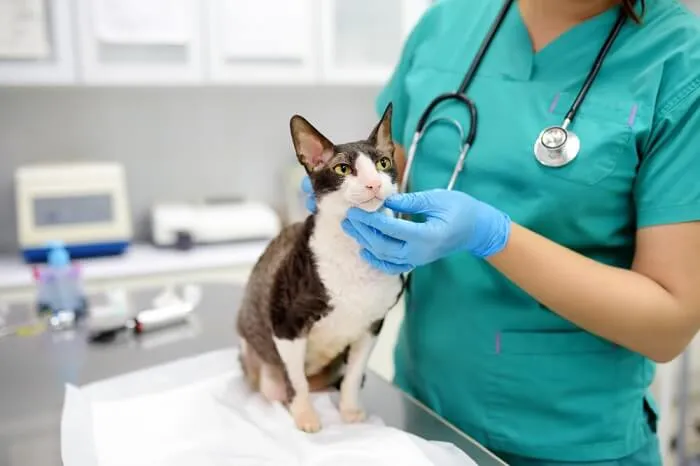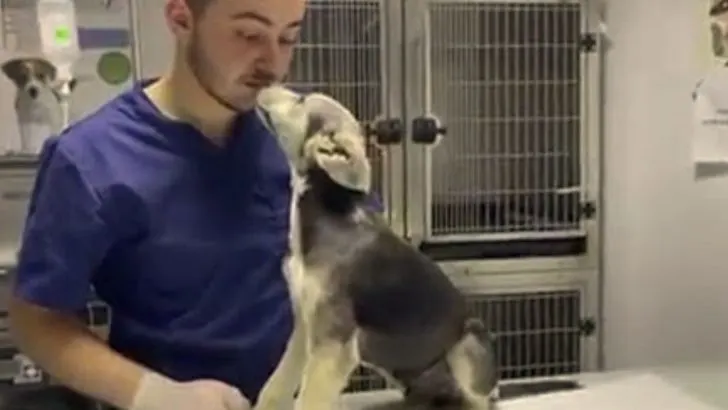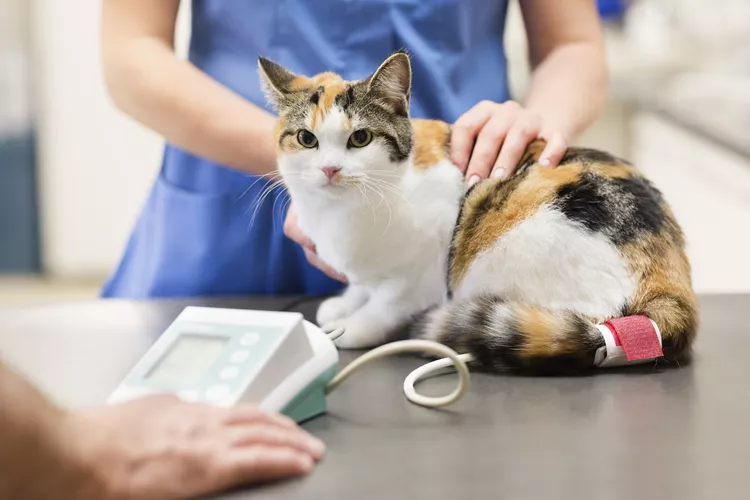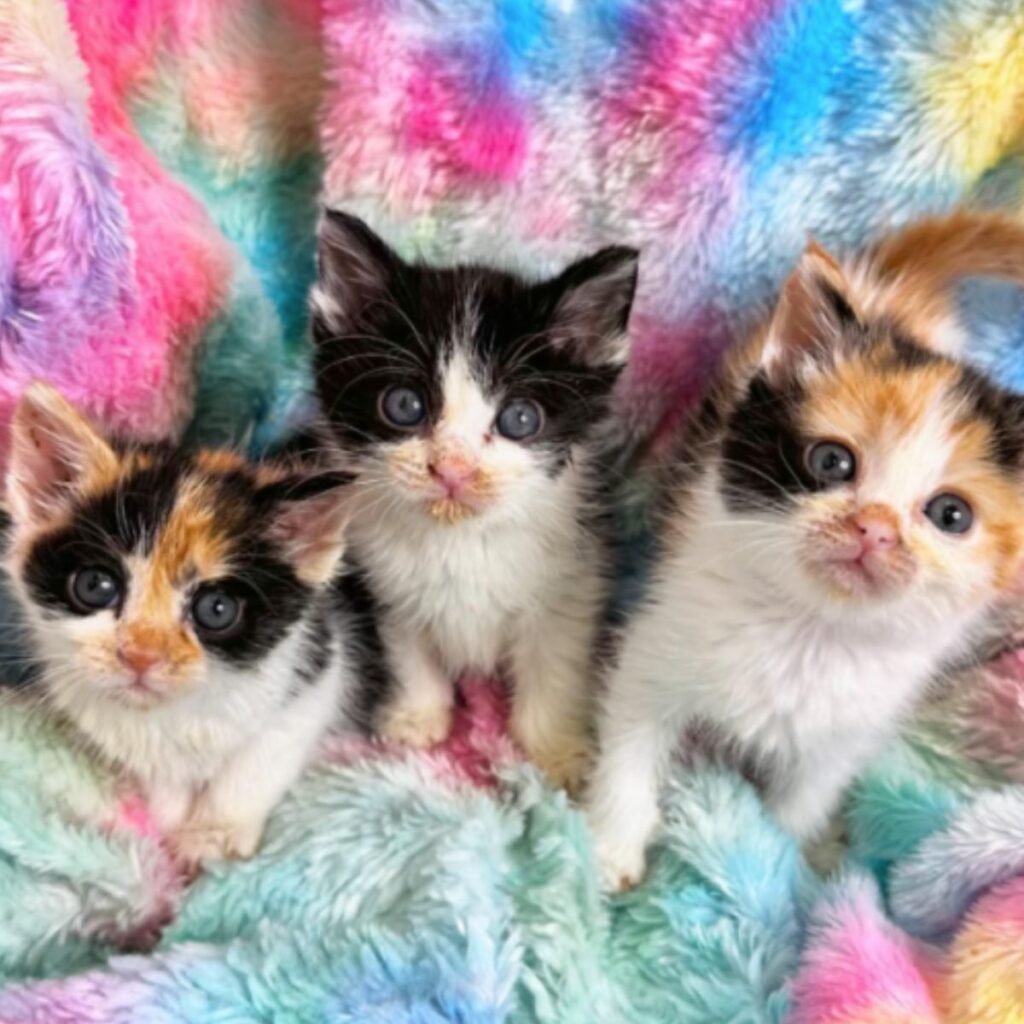It would be so much easier if our cats came with instruction manuals, wouldn’t it?
You probably have feeding and play schedules figured out, know about vaccines and flea control, and even know your cat’s favorite petting spot, but when it comes to preventing pain and disease, and helping your cat live their best life, there is much more your veterinarian would love for you to know.
1. Your Cat Probably Has Dental Disease
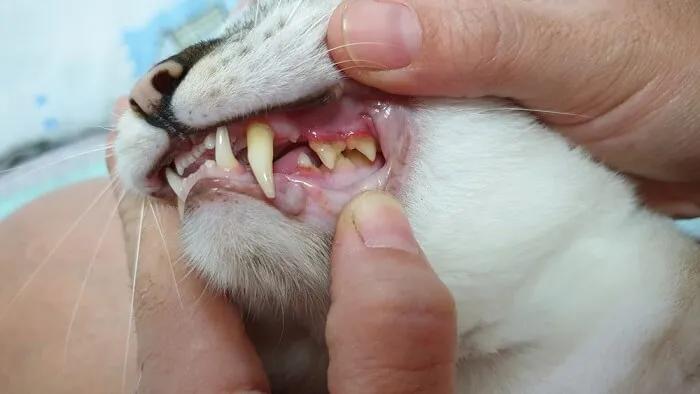
Dental disease is painful, can lead to tooth loss and also negatively affects a cat’s overall health.
Many pet parents are surprised when their veterinarian tells them that their cat has dental disease because the concept of dental disease in cats is not common knowledge. By the age of 4, most domestic cats will have some level of gum disease, which is called gingivitis.
Dental disease often goes undetected in cats because they typically don’t visit the veterinarian unless they are due for vaccines or showing signs of illness. Dental disease is a slow, progressive condition, and most cats learn to live with the pain and don’t show overt signs of oral discomfort.
Dental disease is not only painful, it negatively impacts the overall health and wellbeing of cats, and vets wish that more people knew about this common health condition.
What You Can Do About It:
- Have your cat’s teeth checked once a year by a veterinarian
- Establish an at-home dental care routine
- Watch for signs of dental disease, such as bad breath
Read more: Do Cats Dream? Science Has the Answer
2. Osteoarthritis Is Common in Older and Overweight Cats
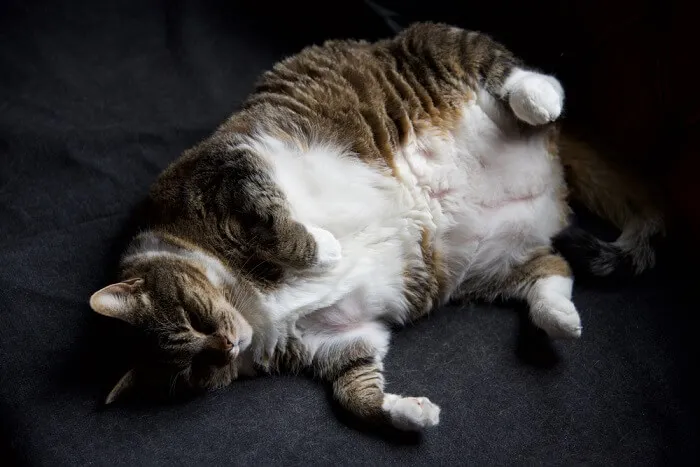
Obesity can lead to the development or worsening of painful osteoarthritis.
People tend to be more knowledgeable about osteoarthritis in dogs than in cats, and because of that, combined with cats’ tendency to hide pain, cats with osteoarthritis often suffer in silence.
Osteoarthritis (OA) is a degenerative condition that causes inflammation in the joints of older cats, resulting in pain and loss of mobility. Millions of cats suffer from this condition, yet few pet parents are aware of it.
Most cats over the age of 10 have some level of OA, though it commonly affects younger cats as well. Cats that are overweight or obese are at increased risk of OA because of increased wear and tear on the joints.
What You Can Do About It:
- Learn about the signs of osteoarthritis in cats
- Keep your cat at a healthy weight
- Give your cat joint supplements to promote joint health
- Talk to your vet if you think your cat is suffering from arthritis pain
3. It’s Important To Plan Ahead for Veterinary Bills
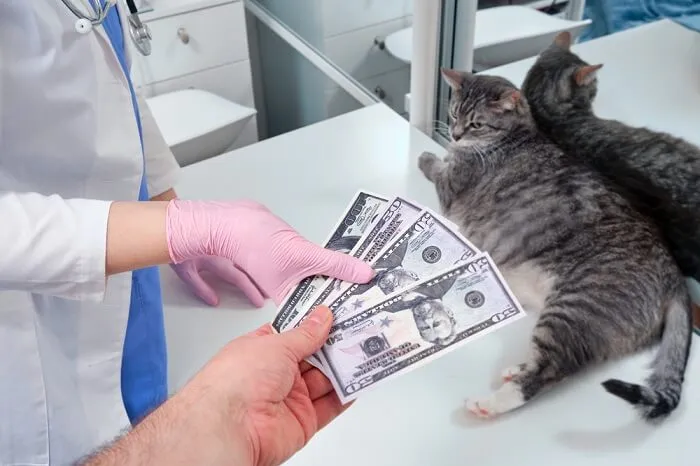
Pet insurance and savings plans can help you budget for your cat’s veterinary expenses.
Most people are surprised by the cost of veterinary care when their cat becomes unexpectedly sick or injured. Furthermore, when your cat gets sick or injured you are already worried, and unexpected veterinary costs can make a stressful situation worse.
Sometimes you can’t afford the care that your cat really needs, which can lead to unnecessary suffering and in some heartbreaking situations, euthanasia.
This is also stressful for your veterinarian, who wants to practice good medicine and provide the best care, but is under the constraints of a small cash business (which is what most veterinary hospitals are).
That is why it is important to plan ahead for veterinary bills, even if you just adopted a cute little kitten.
Read more: How To Avoid Losing Your Cat? Discover These 7 Things Right Away To Keep Your Cat Safe
What You Can Do About It:
- Start an emergency savings account that you only access for veterinary care, aim to save $2,000 to $5,000.
- Get a credit card and only use it for veterinary bills.
- Open a line of credit with Carecredit or Scratchpay so that you have it if you ever need it.
- Purchase pet insurance BEFORE your pet gets sick or injured.
4. Annual Exams Are Critical to Your Cat’s Health and Well-Being

All cats, even those that appear outwardly heathy, should visit the veterinarian at least once a year.
Since most cats are only visiting the veterinarian when they are sick or injured or need vaccines, that means that most cats aren’t receiving yearly physical examinations. One of the most important aspects of health care for your cat is having an annual examination performed by a veterinarian.
This is important because exams can catch hidden health conditions early (like dental disease or osteoarthritis) before irreversible damage is done.
Annual bloodwork is also a very important aspect of care for older cats for the same reason.
What You Can Do About It:
- Even if your cat isn’t due for any vaccines, don’t skip the annual visit to the veterinarian – your cat’s health and well-being may depend on it!
5. Cats Can Get Heartworm Disease, Too
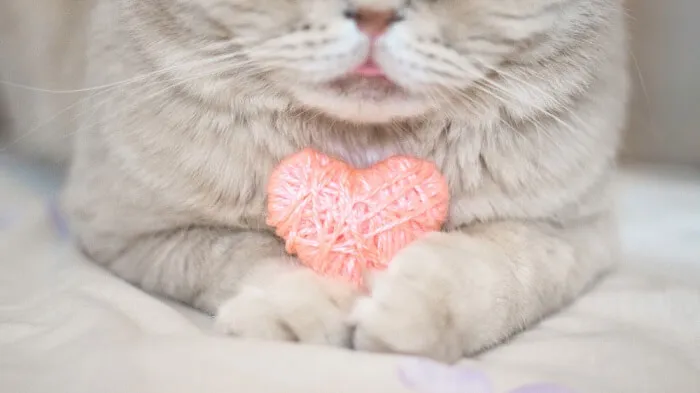
Heartworm disease is less common in cats than in dogs, but it’s deadlier because there is no treatment for it.
If you have a dog, then you probably have heard about heartworm disease, but did you know that cats are also at risk of heartworm disease? Heartworm disease is a serious and potentially fatal infectious disease of dogs and cats.
It is carried by mosquitoes, and while heartworms can’t reproduce in cats and don’t often mature in cats, they can still infect cats and even one or two worms can cause problems.
Heartworm disease often goes undiagnosed in cats because cats aren’t routinely tested for heartworms.
Signs of heartworm disease in cats include:
- Coughing
- Intermittent vomiting
- Decreased appetite
- Seizures
- Collapse
Read more: How Long Do Outdoor Cats Live? The Sad Truth
What You Can Do About It:
There are no good medications to treat heartworm disease in cats, which is why prevention is key. If you live in an area that has heartworm disease, talk to your veterinarian about prevention.
6. Obesity Causes Big Problems
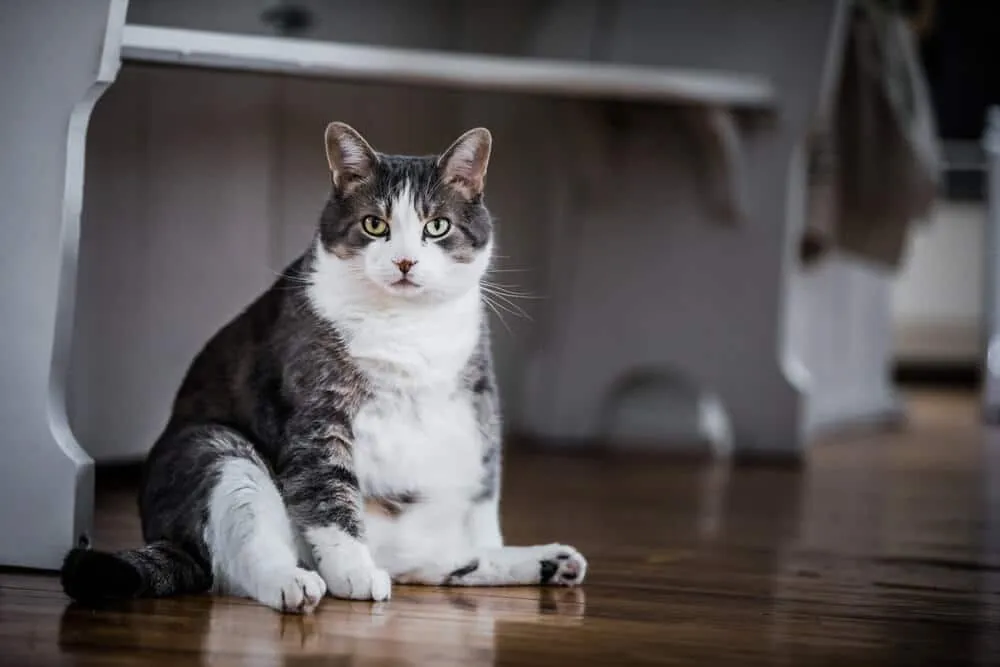
Obese and overweight cats are at higher risk of developing health problems.
According to the Association for Pet Obesity Prevention, 60% of cats in the United States are overweight or obese. Overweight and obese cats don’t live as long as lean cats, and are at increased risk for pain from osteoarthritis, high blood pressure, kidney disease, type 2 diabetes, and certain types of cancers.
Obese cats have higher veterinary bills and food bills, and people don’t seem to care as much when their cat is fat, which tends to drive veterinarians a bit crazy.
Veterinarians wish you knew that you could prevent many diseases, lower your veterinary and food bills, and help your cat live longer and happier just by keeping your cat lean. It is so simple, yet when you consider the psychological components, also more difficult than we appreciate.
What You Can Do About It:
Ask your veterinarian if your cat is overweight or obese, and if so, work with your vet to create a weight loss journey that will get your cat back on the road to health.
Your vet will be able to provide your cat’s ideal weight, instruct you on the amount of calories per day to feed, provide food and exercise recommendations, check your progress, and cheer you on. Together, we can end pet obesity and the associated chronic diseases.
7. Indoor Cats Need Exercise and Mental Stimulation
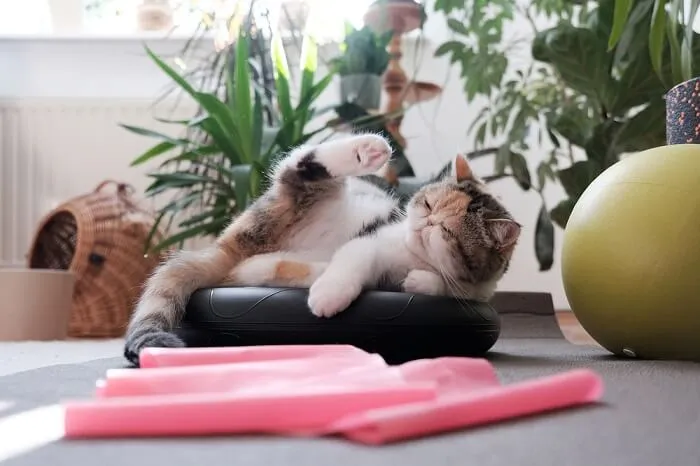
Cats that live indoors need plenty of playtime so they get enough exercise.
While indoor cats tend to live longer than outdoor cats, they also tend to suffer higher rates of obesity and stress-related disorders because they lie around, eating because they are bored.
Read more: WHAT DO DOGS LOVE THE MOST?
What You Can Do About It:
To maintain indoor cats in good physical and mental health, they need daily exercise and mental stimulation. This can prevent many stress-related behavioral and physical disorders, including stress cystitis, inappropriate elimination, and aggression.
The American Association of Feline Practitioners has an excellent resource for cat owners on how to provide a healthy indoor environment for their cats.
8. Cats Need Moisture From Their Food

Wet food helps cats consume more water.
The ancestors of the modern-day cats were desert dwellers, and obtained most of their moisture from the prey they caught and ate.
Cats have a decreased drive to drink as compared to dogs and humans, and as a whole, don’t tend to drink enough water to keep themselves adequately hydrated.
What You Can Do About It:
- Feed cats a combination of canned and dry food
- Add low-sodium chicken or beef broth or tuna juice to food to moisten it
- Use a water fountain instead of a water bowl
9. Poor Hygiene and Litter Box Etiquette Might Be Causing Your Cat’s Litter Box Problems
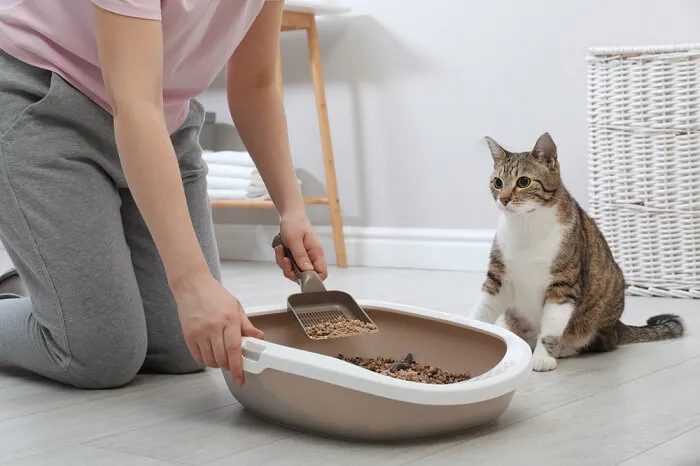
Many cats will avoid using the litter box if it’s not kept clean enough.
One of the most common reasons cats are relinquished to shelters is because of litter box problems, something that could be fixed if people knew more about how their cats think.
If cats don’t like the box, the location, the litter, the cleanliness of the box, or feel crowded or rushed by other cats, then they will reject the box and eliminate someplace else.
What You Can Do About It:
- Locate boxes in quiet, warm, low-traffic, well-ventilated areas (away from the furnace and washer/dryer)
- Use fine, sandy, clumping unscented litter and cover the bottom with 1 inch of litter
- Scoop litter daily; refresh litter every two to three days
- When cleaning, avoid harsh cleaners. Use 1:1 ammonia/water solution to clean
- In multi-cat households, have one more box than the number of cats in your home
- Avoid liners, hoods and automatic cleaners; most cats prefer plain boxes
- If your cat has arthritis, use a box with lower sides
10. Veterinary Visits Don’t Have To Be Stressful

Ask your veterinarian for help making veterinary visits less stressful for your cat (and you!).
One of the other reasons that cats aren’t taken to the veterinarian as often as dogs are is because it’s stressful!
The cat is scared and you are stressed (and sometimes embarrassed by your cat’s behavior or you feel bad for your cat). It can be hard to catch the cat and put them in a carrier in order to bring them to the vet. The whole experience can be just awful from beginning to end.
Fortunately, the veterinary industry is well aware that the struggle is real, and there has been a movement within the profession over the past decade to make veterinary visits less stressful.
This includes low-stress handling techniques, modification of waiting rooms and exam rooms, cat-only hospitals or separate cat areas, and more.
Read more: Norwegian Forest Cat: Majestic Feline Guide
What You Can Do About It:
While veterinary professionals are working hard from their side to make veterinary visits more enjoyable and safe for all parties involved, veterinarians wish you knew that there are things you can do at home before the visit and during the visit that will improve the experience even more!
The American Animal Hospital Association has a list of recommendations that can help.
By following these recommendations, you can prevent many problems in your cat before they start, reduce the cost of veterinary bills, help your cat live a longer, healthier life, and make your veterinarian very happy.
